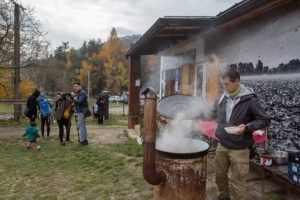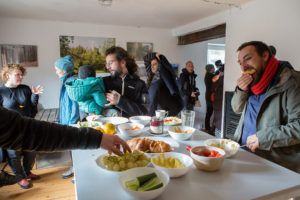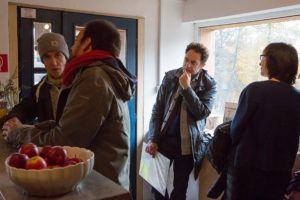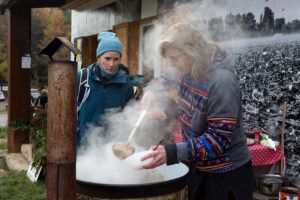Andrea Kalinova / The Last Snow
Hájovňa – Červená studňa
opening 19.11. at 11am
exhibition lasts until 18.12.2022
Curator: Zuzana Duchová
Does sustainable skiing still exist? The impact of climate change on the slopes is undeniable. Winters are getting shorter. Temperatures are rising, which has a direct impact on winter resorts, some of which are now up to 80% artificially snow-covered. Experts say that if we continue at this rate, there will be no snow in 100 years’ time. Does skiing as a sport still have a future in Slovakia? Asks Andrea Kalinová, a former downhill skier and visual artist. In times of global warming, when we consider the implications of several human activities that are associated with cold weather, we come up with some interesting findings. Enthusiastic skiers like Kalinova would like to ensure that skiing becomes sustainable. Can it still be done? Many studies show that meaningful skiing in our hemisphere will only happen from an altitude of 700m. Many resorts are trying to change this by introducing solar panels and wind turbines to supplement the energy they use. Will this be enough if tourists travel by plane anyway? What is the problem Although skiing may not be harmful in itself, ski resorts, industry and other factors associated with skiing can have a negative impact on nature. In creating the perfect ski resort, deforestation is likely to occur. Trees have to be cut down to make way for skiers and ski lifts. The lack of trees not only affects the environment but also the animals that live in the trees. Another reason why skiing can be harmful to the environment is related to the water that these resorts consume on a daily basis. Due to global warming, artificial snow has to be used to replenish the snow cover, and this process requires a lot of water from nearby lakes and rivers on a daily basis. Ski resorts use fossil fuels to generate the electricity that is needed each day to run the ski lifts and other important parts of the resort. Interestingly, a ski resort uses almost the same amount of energy in one month to operate the ski lifts as 3.8 houses do in an entire year. This is an extraordinary amount when compared to the 5 gallons of diesel fuel per hour consumed by the groomers. What we see in the photos and in our landscape The exhibition does not attempt to give clear-cut instructions or condemn skiing as a whole. It is a speculative personal archaeology, an exploration of an area of Slovakia. What will our great-grandchildren think if they still find these relics in the landscape? The hypothetical question also works in the opposite historical direction: how would our ancient ancestors have perceived such objects? Skiing has become a problematic pastime for the financially well-off strata of the population. Changes can also be observed in official downhill skiing competitions – several events had to be cancelled due to inclement weather. What was it like when every village had its own ski lift? When we were experiencing first loves on ski tours?










